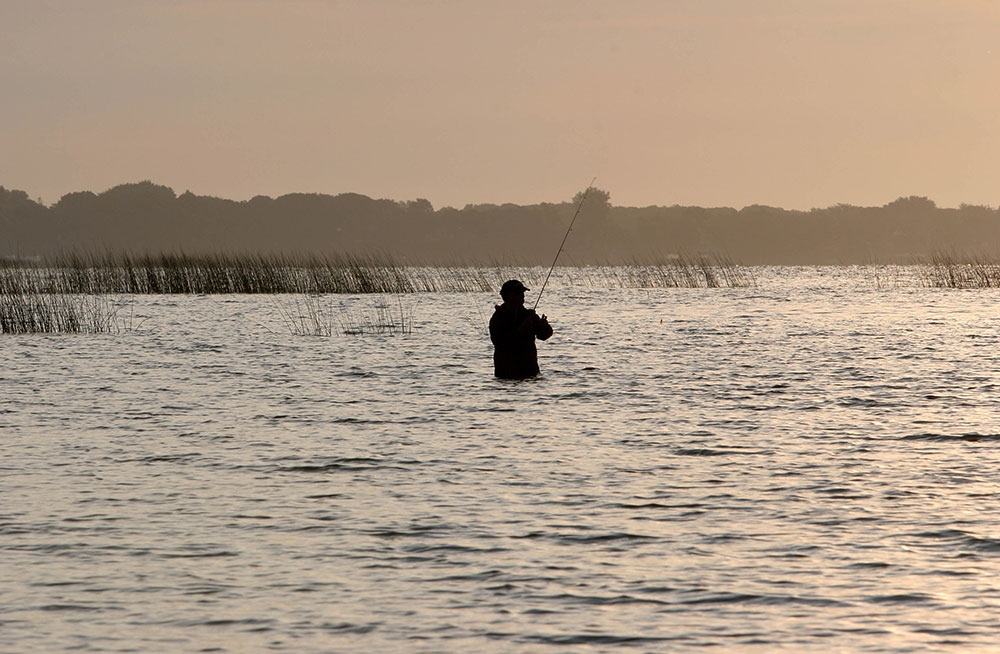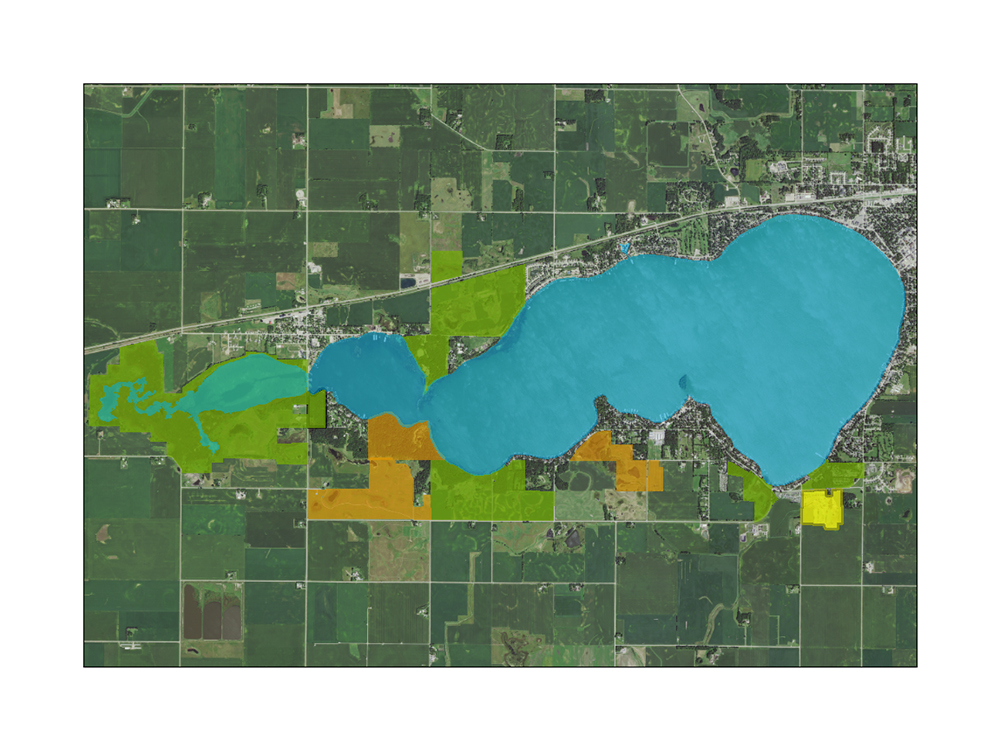Where the wild things were
By Cheri Grauer on September 19, 2016 in Blog
Early accounts of Clear Lake, a spring-fed lake with origins in the last glacial period, tell of its use as a favorite summer camping ground of the Sioux and Winnebago peoples. By the mid-1800s, tales of the beautiful lake with plentiful fish and wildlife had captured the attention and imagination of Euro-American settlers. In short order, what had been a wild and vast wetland-pocked prairie ecosystem, replete with a dizzying array of native plants and animals, was being domesticated.

An 1895 Cerro Gordo County plat book depicts the parceling of the land surrounding the lake for agricultural purposes. By the early 1900s more and more land was being tiled to enhance drainage. The peatlands in the area, high in organic matter and perennially wet, were especially difficult to farm and especially productive once drained. Advances in tile drainage seemingly removed the last limitation to agricultural intensification in this part of the state.
The “town end” of Clear Lake quickly boasted hotels, then restaurants with big dance floors, a casino and later an amusement park. Houses and summer cottages began to sprout up along the shoreline. Clear Lake State Park, featuring picnic areas and a swimming beach, was created for public use and enjoyment. Clear Lake was fast becoming a favorite summer playground for tourists and year-round residents alike. Over time, more intensive and extensive agriculture, more residential development on the lakeshore and growing recreational use of the lake pushed even harder against the remaining wildlife and wildlife habitat.
The bulrush beds began to recede, shoreline erosion increased, nutrients entering the lake from agricultural lands compromised water quality and upland bird populations declined with the continued loss of nesting habitat in the surrounding countryside.
These wake-up calls alerted people to the importance of natural habitat for both wildlife and for human well-being. In particular, residents of Clear Lake became more aware of the connection between protecting and restoring wetland and other natural habitats and enhancing water quality. Conservation organizations and concerned individuals stepped up to respond — which brings us to a very recent effort to reclaim some wildness for the Clear Lake region.
Restoring a wild place
Early in 2015, the Pedelty family approached INHF to see if together we could reclaim a little more wildness on the south side of Clear Lake. A portion of a farm previously owned by Holmes, Jane (Duesenberg) Pedelty, Jo Pedelty, and her sons HJ and Adam Pedelty, had for 30 years been leased to a local family for use as a par three golf course. Growing awareness of local water quality concerns — and of the importance of wetlands to water quality — led the Pedelty family to reconsider that use.
Sharing some of his family history, Mark Pedelty related that both the Pedelty and Duesenberg families have had a long connection with Clear Lake.

“Like other Clear Lake families, our lives revolved around the lake when I was growing up. When I was a kid there was nothing better than jumping into the lake after a day of working at the family cattle auction market. On the less positive side, I remember canoeing and water skiing through mats of algae back when we were letting too much phosphorous from fertilizers and other pollutants stream into the lake. Given how central the lake was to all of us then, water quality as well as lake recreation is very important to us now.”
Pedelty went on to note, “The community and local stewards have done a great job of cleaning up Clear Lake in recent years. Restoring and reconnecting another wetland might help that effort. We are thankful that organizations like INHF and the Iowa DNR are around to do this important work. We’d like to be part of that local work.”
According to T.J. Herrick, Iowa DNR wildlife biologist, once INHF transfers this property to the Iowa DNR, the process of turning the Pedelty family’s vision into reality will begin. The Iowa DNR will reconstruct a five to eight acre wetland basin and will restore native prairie and savanna in the upland portions of the property. The area will be managed for wildlife and available for public use and enjoyment.
When restored, the wetland, prairie and savanna will complement the many other efforts that have helped retain or return elements of wildness to Clear Lake.
“We look forward to seeing this 60-acre parcel restored to wetland as it was before the ’80s, before it was tiled and partially drained. Once restored, it will again provide essential environmental services, including filtering the water entering Clear Lake,” Pedelty said.

“We want the wetland to once again provide habitat for birds and other wildlife, while also offering some recreational opportunities for local residents and visitors to the lake, such as birding and hiking and a convenient connection to the state park, just across the street.”